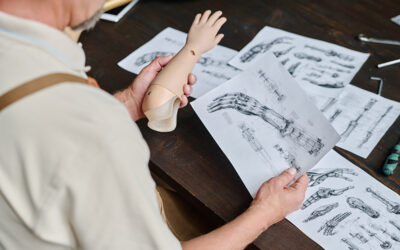Fine Needle Aspiration (FNA) is a simple biopsy technique in which a thin needle is passed through the skin to obtain a sample of a fluid or tissue from a swelling or lump. In 2019, there are several changes to FNA CPT codes. Partnering with an experienced medical billing and coding company is the best way for physicians to keep up with these updates and report FNA procedures for optimal reimbursement.
FNA – A Simple Office Diagnostic Procedure
FNA is usually done in the breast, thyroid gland or lymph nodes in the neck, groin, or armpit. It is an effective technique for rapid tissue diagnosis of a suspicious lump, cyst or mass discovered in these areas during a physical exam, CT scan, mammogram or ultrasound. A relatively non-invasive, less painful and quicker method than surgical biopsy, FNA can help make a diagnosis or rule out conditions such as cancer. This simple office technique which is performed through the skin comes with many benefits:
- Rapid, highly accurate diagnosis
- Economical
- Samples can be taken from various sites in one sitting
- Minimal discomfort for the patient
- Makes possible many ancillary techniques such as bacterial culture, flow cytometry, cytogenetics, etc.
- Safe with low rate of complications
- Requires little recovery and results are available quickly
FNA Coding Changes 2019
Prior to January 1, 2019, FNA biopsy(ises) was reported separately with imaging guidance. Changes in 2019 include:
- A single code to report fine needle aspiration of an initial lesion, without imaging guidance
- New CPT codes to report FNA biopsy(ises) according to number of separate lesions biopsied in the same session, same day and by imaging modality used to guide the biopsy, including ultrasound, fluoroscopy, computed tomography (CT), and magnetic resonance (MR)
- New add-on CPT codes to report each separate lesion beyond the first lesion based on whether imaging guidance is used-and, if so, which type (ultrasound, fluoroscopy, CT, or MR).
The FNA code changes for 2019 are as follows:
New:
| 10021 | Fine needle aspiration biopsy, without imaging guidance; first lesion |
| #+10004 | each additional lesion |
| #10005 | Fine needle aspiration biopsy, including ultrasound guidance; first lesion |
| #+10006 | each additional lesion |
| #10007 | Fine needle aspiration biopsy, including fluoroscopic guidance; first lesion |
| #+10008 | each additional lesion |
| #10009 | Fine needle aspiration biopsy, including CT guidance; first lesion |
| #+10010 | each additional lesion |
| #10011 | Fine needle aspiration biopsy, including MR guidance; first lesion |
| #+10012 | each additional lesion |
Deleted: Code 10022 Fine needle aspiration; with imaging guidance has been deleted.
No change: Evaluation of fine needle aspirates is still reported with CPT codes 88172 and 88177.
Points to Note
- AAPC points out that providers can “mix and match” the primary and add-on codes in any combination necessary to report medically-necessary services rendered. For example, FNA of an initial lesion using CT guidance can be reported along with an add-on code to report FNA of one additional lesion without guidance.
- In each case, only one primary (“initial lesion”) code can be reported, and modifier 59Distinct procedural service should be appended to any add-on (“each additional lesion”) codes reported, if the add-on code(s) and the initial code describe different types of imaging, such as when reporting FNA of an initial lesion using CT guidance, and FNA of an additional lesion using MR, ultrasound, fluoroscopy, or no guidance. This rule applies regardless of whether the lesions are ipsilateral or contralateral to each other, and/or whether they are in the same or different organ/structures.
- Imaging should not be reported with any of the new FNA codes.
- In 2019, CPT clearly defines fine needle aspiration (FNA) biopsies and core needle biopsy:
- Fine needle aspiration (FNA) biopsyis performed when material is aspirated with a fine needle and the cells are examined cytologically.
- Core needle biopsyis typically performed with a larger bore needle to obtain core sample of tissue for histopathologic evaluation.
- When FNA biopsy is performed on one lesion and core needle biopsy is performed on a separate lesion, same session, same day using the same type of imaging guidance, both the core needle biopsy and the imaging guidance for the core needle biopsy can be reported separately with modifier 59.
- When FNA biopsy is performed on one lesion and core needle biopsy is performed on a separate lesion, same session, same day using different types of imaging guidance, both the core needle biopsy and the imaging guidance for the core needle biopsy may be reported with modifier 59.
Here is an example of correct coding provided by the American Academy of Clinical Endocrinologists (AACE):
- Ultrasound guided fine needle aspiration biopsy on a single, left thyroid nodule CPT Code 10005 – RT
- Ultrasound guided fine needle aspiration biopsy on a left thyroid nodule and a right thyroid nodule: CPT Code 10005- RT; CPT Code +10006-LT
In this case, modifier 59 would not be appended since the CPT description of code 10006 indicates an additional lesion.
Proper documentation is necessary to ensure accurate coding. The documentation should:
- Identify the location of each treated lesion
- Provide a detailed description of each treated lesion
- When guidance is used, identify the type of modality (such as ultrasound, fluoro, CT, MR) for every lesion treated
- Explain medical necessity for each treated lesion
Outsourcing medical billing and coding can ensure accurate claim submission. Experienced coders in such companies are knowledgeable about the new and revised CPT codes and descriptions for fine needle aspirations and can submit error-free claims for this commonly performed procedure.




